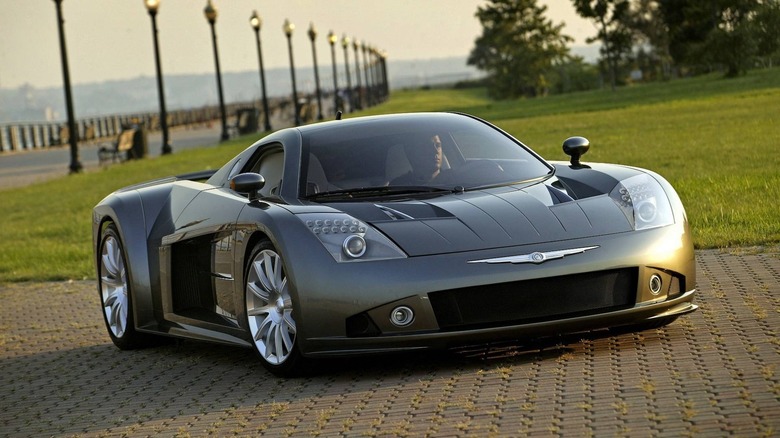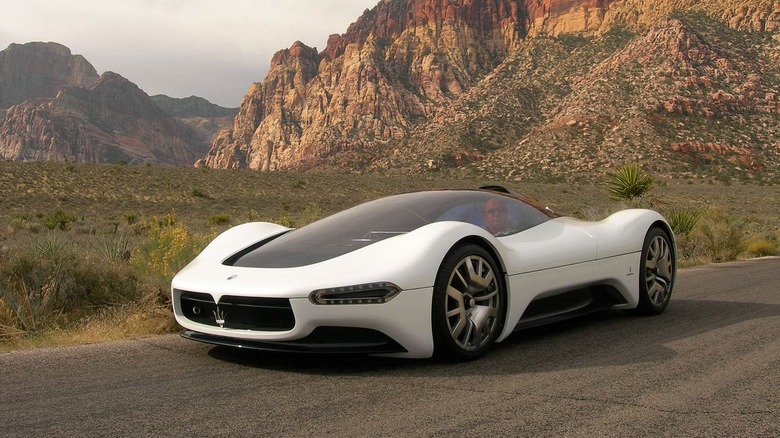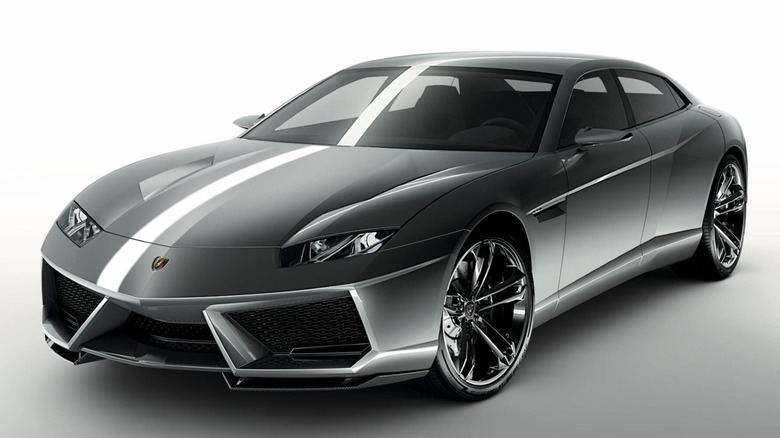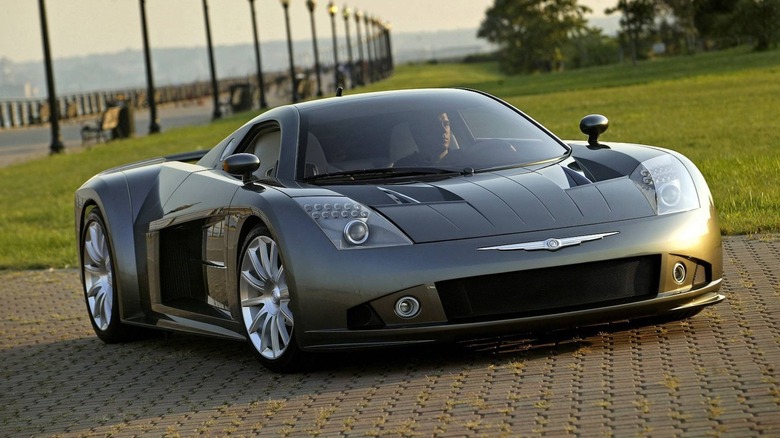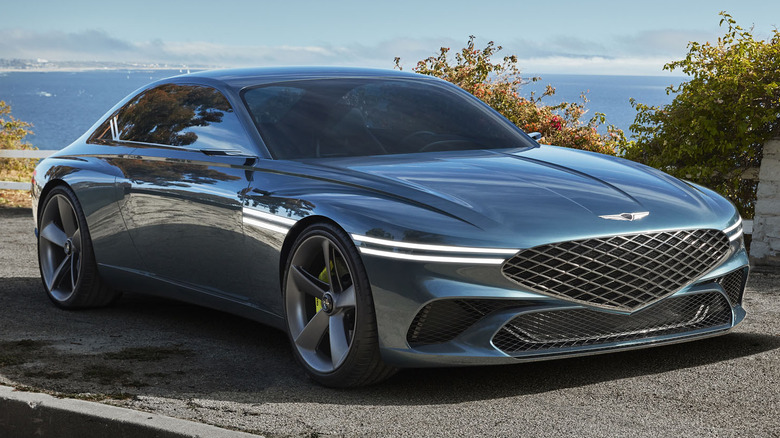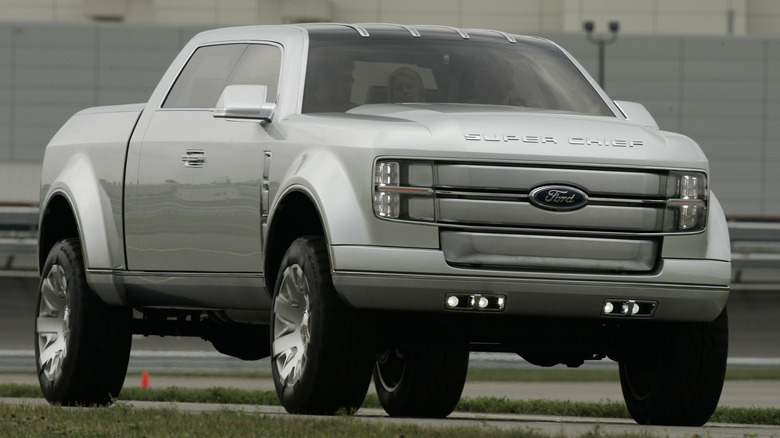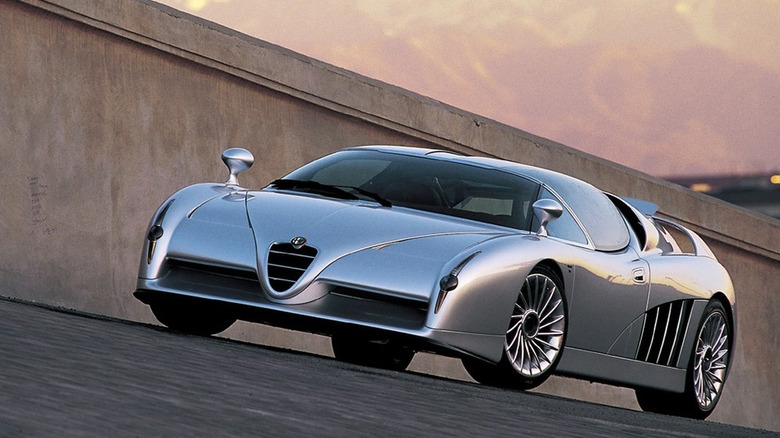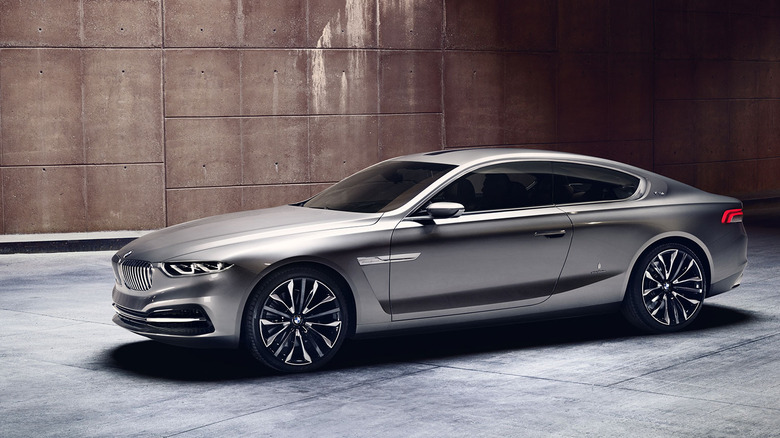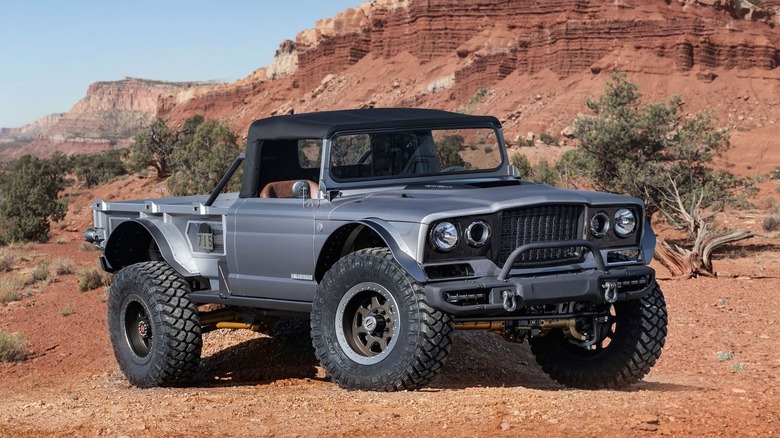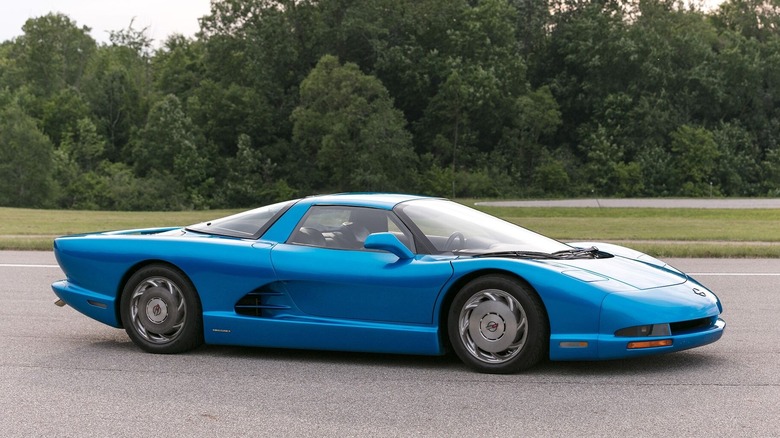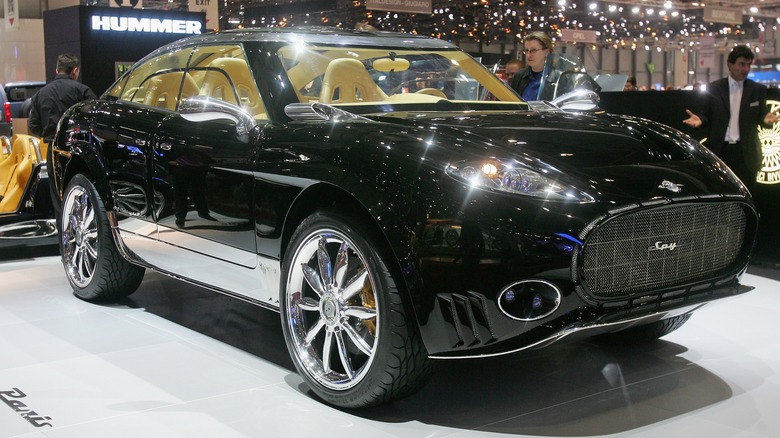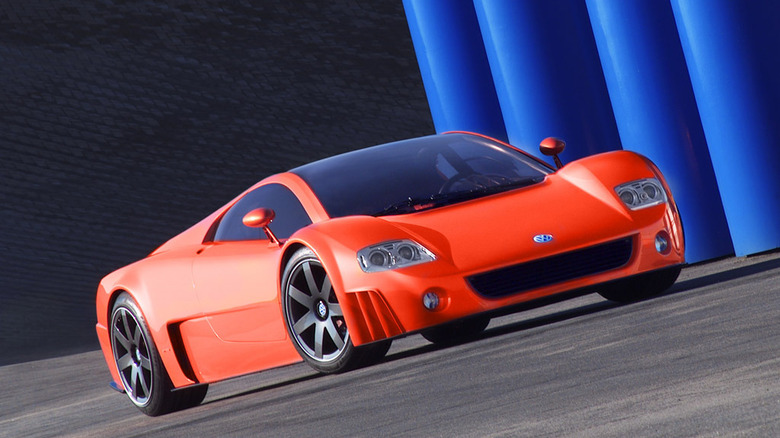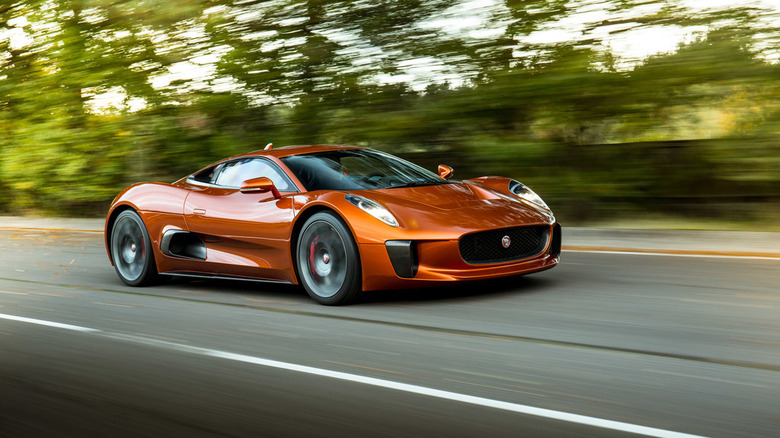Incredible Concept Cars That Should Have Been Made
The idea of concept cars has been around almost as long as the automobile itself. Manufacturers collectively spend tens of millions of dollars every year building them, although most will never make it to production. Instead, they're primarily "development accelerators" according to DS design director Theirry Metroz, providing a test bed for manufacturers to show off their latest designs and innovations, and expedite development of the most popular features. There are also some concepts built primarily as design studies, one-offs that exist simply to impress the public at car shows, and draw attention to the brand in general.
Every so often, an automaker will show off a car that's a cut above the rest, one that sticks in the memories of enthusiasts for years after it was first unveiled. These incredible concepts capture the imaginations of the press and public alike, drawing lots of positive coverage and generating the inevitable rumors that the car might go into production. However, in the case of the 12 cars listed here, they never did get made into production cars, leaving fans to wonder what could have been.
Maserati 75th Birdcage Pininfarina
The 75th Birdcage was a futuristic collaboration between Maserati, Pininfarina and Motorola, unveiled at the 2005 Geneva Motor Show. It was designed as a one-off technology showcase, using what was at the time cutting-edge 3D rendering technology to reduce the car's design phase down to a period of just two months. The car is fully functional and based on the chassis of a Maserati MC12 GT1 car, sharing its 6.0L V12 engine and many of its internal components. As its name suggests, the car was built to celebrate the 75th anniversary of its designer Pininfarina, while paying homage to the long history of collaboration between the Italian studio and Maserati.
The most notable technological innovation in the car is its one-piece canopy, which opens directly upwards to allow the driver to get in and out of the car. The configuration was inspired by the Ferrari Modulo, another famous concept car that was designed by Pininfarina in 1970 and featured a similar doorless design. Upon its debut at Geneva, the 75th Birdcage won several industry design awards, including the Best Concept Car Award at the show and the Louis Vuitton Classic Concept Award a year later in 2006. However, it was never considered for a production run, perhaps due to the difficulties of getting such a technologically-complex car to meet global road regulations.
Lamborghini Estoque
A four-door supercar might not seem too out of the ordinary today, but back when the Lamborghini Estoque debuted in 2008, the idea seemed much more radical. The car was designed to compete against the Ferrari FF and Porsche Panamera Turbo S, and it featured the 5.2L V10 engine from the Gallardo. Lamborghini toured the car around several major auto shows and the response from customers was generally very positive. Reports soon started to surface that the car would hit showrooms by 2011. However, 2011 came and went, and there was no sign of the production car. Then 2012, and 2013, and still nothing. A few years later, Lamborghini would confirm that the project had been officially axed.
It later emerged that there were two main reasons why the Estoque project never made it to showrooms. Firstly, the car was directly competing against another VW Group model, the Porsche Panamera, and Carscoops reports that VW's board was worried that the Estoque might cannibalize sales of the four-door Porsche. Secondly, another Lamborghini project was also in development, that of a super-SUV. Funding for the Estoque was cut in part to provide funds for this SUV, and in 2018, this new car debuted as the production Urus. It seems the company made the right decision in focusing on the Urus, as it has become the company's best-selling car by a considerable margin.
Chrysler ME Four-Twelve
In 2022, Chrysler is a shadow of its former self, only selling two models, the Pacifica minivan and the veteran 300 sedan. Its decline has been rapid, as back in 2004, the company's lineup totaled seven different models, and it seemed like an eighth was on the way shortly. This was the year that the company debuted the ME Four-Twelve, a mid-engined supercar with an AMG V12 engine that made 850 horsepower. Chrysler had merged with Daimler, parent compAreamofo1
any of Mercedes-Benz in 1998, and wanted to take advantage of the German brand's performance parts bin.
Chrysler's engineers began working on the project in secret, and eventually a fully-functional prototype ME Four-Twelve was made available for select members of the press to drive in 2004. It was one of the fastest cars in the world at the time and, Motor Trend claimed, significantly faster than a Ferrari Enzo. Its top speed was a claimed 248 mph, which was groundbreaking as the official production car speed record at the time stood at 221 mph. Unfortunately, the same partnership that allowed the creation of the Chrysler supercar also prevented it from reaching production. Mercedes didn't approve of the fact that the car would outperform its recently launched SLR McLaren, and so blocked Chrysler from using its engine. Without a suitable powerplant, the ME Four-Twelve project was dead in the water.
Genesis X Concept
Hyundai's luxury arm Genesis is a relative newcomer to the industry, having only been founded in 2015. However, it has quickly established itself as a serious player, reporting a 203% increase in US sales in 2021 compared to the previous year. Part of this has been down to the brand's combination of value-oriented pricing and attractive design, and one of the best examples of that design is the 2021 X Concept. A futuristic grand tourer with an electric powertrain, the X Concept is arguably one of the best-looking concepts in recent years, and wouldn't look out of place alongside contemporary cars from Porsche or Bentley.
A lot of buzz was generated when the concept was unveiled, but so far there has been no word from Genesis on whether anything like it will make production. A second variant of the concept called the X Speedium was unveiled in April 2022, but its revised exterior design didn't generate as much of a positive response as the original incarnation of the car did. The only thing that Genesis has confirmed is that some design elements of the X will be incorporated into upcoming production vehicles, which doesn't sound too promising for the prospects of the X making it to production overall.
Ford Super Chief
Ford's best-selling F-Series trucks have largely stuck to the same tried-and-tested formula for decades now, but during the mid-00s, the company had much bolder plans for its range. The Super Chief concept was the embodiment of those plans, featuring a 6.8L V10 engine that could change at the flick of a switch to run on one of three fuels: gasoline, bio-ethanol, or hydrogen. In hydrogen mode, the Super Chief made 280 horsepower and produced over 90% less carbon dioxide emissions than when using gas. In both biofuel and gas mode, power was boosted slightly to 310 horsepower, and it could be refueled at a regular gas station just like any other truck. Ford was serious about putting the system into a production vehicle, with Auto Express reporting that the company had promised to build 250,000 biofuel vehicles a year at the time of the concept's unveiling.
The interior of the Super Chief was also significantly more luxurious than most other trucks at the time, with one reviewer even calling it better than the ultra-expensive Maybachs of the same era. Unfortunately, its innovative "Tri-Flex" fueling system has seemingly never gotten close to production. The Super Chief debuted in 2006, just two years before the start of a global recession that would see all manner of experimental projects get axed as development funding dried up. It's safe to assume that the tri-fuel project was one of those that got axed, and nothing like it has been made since.
Alfa Romeo Scighera
For a company with its roots so firmly planted in motorsport, Alfa Romeo has been surprisingly reluctant to ever make road-going supercars. The 8C Competizione was the first proper Alfa supercar of the modern era, but ten years before that car debuted, the Italian brand had teamed up with Italdesign, with a very different vision for what an Alfa Romeo supercar could look like. The Scighera was a mid-engined fully-functional prototype with a V6 engine that made around 400 horsepower. It featured an all-aluminum body and looked futuristic, yet it was based on the platform of the aging 164 executive sedan.
The front of the car featured a unique "clown eye" design, and the rear featured tail lights connected in a boomerang shape, which Jalopnik notes is reminiscent of the pre-facelift Maserati 3200 GT. The windows and roof of the car were also removable, allowing it to be easily converted to a roadster. It seemed like Alfa was considering a production run of the Scighera, especially since it debuted at the 1997 Geneva Motor Show in both road-going and race-ready GT form. However, the project seemed to simply fizzle out, with the sole working prototype being retained by Italdesign and now permanently displayed at their headquarters, according to Adrian Flux.
BMW Pininfarina Gran Lusso Coupe
It's hard to imagine a production BMW that's luxurious enough to rival a Bentley, especially since BMW Group's Rolls-Royce brand already has the ultra-high-end luxury market covered. But, in 2013, Bimmer showed off a concept car that would have put the Continental GT to shame. The Pininfarina Gran Lusso Coupe was designed with the help of the famed Italian studio, and its purpose was simple: impress the guests at the exclusive Villa D'Este Concours event on the shores of Lake Como, Italy.
It certainly did that, thanks to a combination of elegant design and unique luxury features. In particular, the cabin featured inserts made from fossilized wood rescued from an ancient New Zealand swamp. The wood was carbon dated and confirmed to be 48,000 years old, which sounds like exactly the kind of opulent stunt usually reserved for BMW's ultra-luxury arm Rolls-Royce. It's perhaps this association that stopped the car from reaching production, as BMW wouldn't have wanted to detract attention from its other brand, and so chose to avoid any potential crossover. However, SlashGear correctly predicted that the car signaled the imminent return of the 8 Series moniker, which began production in 2018, albeit in a much less grandiose form than the Gran Lusso Coupe.
Jeep M-715 Five Quarter
One of the highlights of the yearly Moab Easter Safari is always the unveiling of the new concepts that Jeep invariably brings to the event, and in 2019, it showed off one of its best yet. The M-715 Five Quarter pays homage to the 1968 military truck of the same name, recreating its design but adding a thoroughly modern twist. The truck is powered by a 6.2L supercharged Hellcrate Hemi V8, and Dynatrac ProRock axles are fitted with 20-inch Beadlock wheels and 40-inch tires.
The original sheet metal front end has been replaced entirely with carbon fiber, and a custom aluminum bed has been accented with wooden slats, according to Car and Driver. Full-length rock rails have been fitted and the frame has been reinforced for extra strength. It's essentially a factory-built rock crawler, but with the styling of a '60s military truck. With most of the upgraded components already being in mass production at Jeep or its partner suppliers, Jeep could have fairly easily created a low-volume production run for the M-715 Five Quarter but chose not to. The concept had generated plenty of publicity already, and Jeep presumably saw little benefit in making a version for customers.
Chevrolet CERV III Corvette
The first-ever production mid-engined Corvette is the C8, which was released in 2020 after years of teasers and speculation from fans. But, decades before its release, GM was already experimenting with the idea of a mid-engined Corvette. Debuting in 1990, the CERV III featured a 5.7L V8 which would later be put into production in that year's Corvette ZR1. Through its use of dual Garrett turbochargers, it made 650 horsepower, an incredible figure for its day, and more than a McLaren F1. It also featured a number of cutting-edge tech features like four-wheel steering, all-wheel drive, and active suspension.
Motor Trend reports that the car seemed more production-ready than most other GM prototypes. The car's designers had taken care to ensure that smaller elements of the CERV III would be road-legal, such as the height of the bumpers and clearance between the wheels and wheel arches. GM's accountants had even gone as far as calculating a potential MSRP for the car, but it was this that eventually stopped it from reaching production. The base price of a Corvette at the time was around $32,000, reports Motor Trend, but it was calculated that the CERV III would need to retail somewhere between $300,000 and $400,000 to be profitable. GM didn't think anyone would pay that for a Corvette, so it focused its efforts on developing the next-generation C5 Corvette instead.
Spyker D12 Peking-to-Paris
Dutch carmaker Spyker has seen its fair share of failed car launches, but one of its most high-profile is that of the D12 Peking-to-Paris. In 2006, Spyker unveiled the 500 horsepower, V12-engined luxury SUV. In today's market, the car might have fitted in very well, competing against the likes of the Bentley Bentayga and Lamborghini Urus. But, back then, the idea was still very unique. It generated plenty of interest upon its debut, and reportedly chalked up over 100 provisional orders, but Spyker's persistent financial problems meant that not a single one ever got delivered. Shortly after announcing it would commence production of the Peking-to-Paris, Spyker bought Saab, and the resulting financial losses caused the company to go bankrupt.
Spyker was bought out of bankruptcy but chose to focus solely on sports cars, abandoning its plans for its super-SUV. In retrospect, it seems like the wrong decision for the company to have made, as the super-SUV segment is now booming and Spyker's signature C8 sports car never managed to make much of an impact on the market. As of January 2021, the company was declared bankrupt again, and it seems that so far, no investor has been willing to step in and try to revive the company.
Volkswagen W12 Nardo
It's not every day that a carmaker that is best known for making affordable, fun-to-drive cars shows off a W12-powered mid-engine supercar out of nowhere. But, Volkswagen did just that in 1997 with its original W12 concept. Over the next few years, it improved the car, fine-tuning it at the race track and bumping its power up to a mighty 591 horsepower. The unique W12 engine configuration was made up of two VR6 engine blocks fused together to create one 5.9L unit. The car's design was handled by Italdesign and power was transferred to the asphalt via VW's Sychro all-wheel-drive system.
This wasn't just a headline-grabbing design study, far from it. No, this was a fully-fledged supercar, just one that was never sold to the public. The fastest iteration of the W12 concept, called the Nardo, was built specifically for the Nardo Ring, a high-speed test track and proving ground. VW reports that the car set seven world records at the Ring during its showcase event in 2001, and all seven remain standing today. The car received a lot of press attention at the time for its successes, and simply for the fact that it was a VW-badged supercar. The company had stated from the start that it never intended to sell the car in showrooms, and it kept its word, as the only prototypes built still remain under the ownership of VW today.
Jaguar C-X75
Arguably one of the most famous concept cars of the 2010s thanks to its inclusion in the James Bond movie Spectre, the Jaguar C-X75 featured both revolutionary technology and a head-turning design. It was originally unveiled in 2010 and built-in partnership with Williams Advanced Engineering of Formula 1 fame. It featured a hybrid powertrain that was originally set to be supplemented by jet turbines but later converted to a more conventional gasoline and electric setup. The car could reportedly hit 0-62 mph in under three seconds and had a top speed north of 200 mph.
Jaguar had originally planned to make a production run of the C-X75, but the run was eventually canceled thanks to the effects of the global recession. However, Jaguar did complete several working prototypes, and one of these featured in 2015's Spectre, being driven by the character Mr. Hinx. While the car itself never saw its planned production run, the hybrid technology developed for the C-X75 did go on to influence later production Jaguar hybrid models. Jaguar's latest mass-produced supercar, the F-Type, would go on sale a few years later, but in the company's own words, the C-X75 still remains the most advanced Jaguar ever created.
